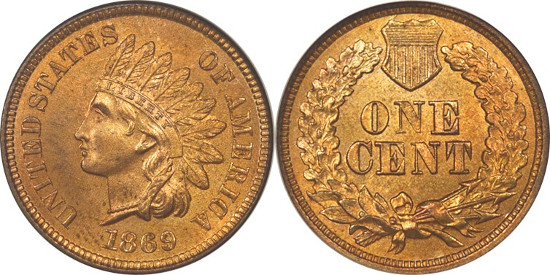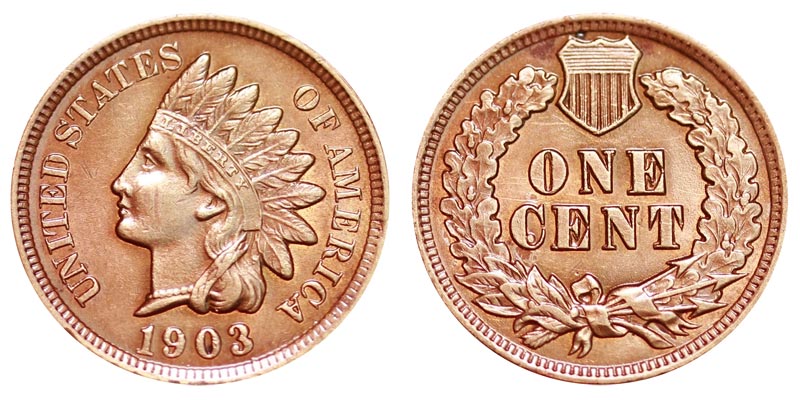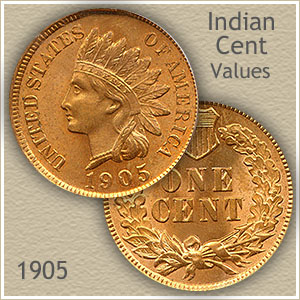Indian Head Penny Value
4/8/2022 admin
Indian Head pennies followed in the early success of the first small cents, which bore the Flying Eagle design minted from 1856 through 1858. Like the earlier series, Indian Head pennies were designed by James B. Longacre, who served as Chief Engraver of the United States Mint. According to CoinStudy's 2014 price guide, a 1900 Indian head penny is worth between $1 to $28, depending on its condition. A completely uncirculated 1900 Indian head penny in pristine condition may be worth over $100. The 1909-S Indian Head penny is one of the most sought-after coins in the Indian Head cent series — which ran from 1859 through 1909. Here is the 1909-S Indian Head penny value: In Good-4, a 1909-S Indian Head penny is worth about $350. Examples grading Extremely Fine-40 trade for approximately $550. From the earliest Half and Large cents, to Indian head pennies to the popular Wheat pennies of 1909 to 1958. Match you coins to the grading images and value charts. Some of these old pennies have amazing values.
Indian Head Penny Overview
Nearly 160 years after its first mintage, the Indian Head penny is still an incredibly popular coin and a staple of many collections.
The Indian Head penny was first struck in 1859, replacing its predecessor, the Flying Eagle cent. The Indian Head penny was only the second small cent to be created.
Like the Flying Eagle cent, the Indian Head penny was designed by James B. Longacre, who was an extremely influential figure in the design of American coinage.
The obverse of Longacre’s design features not an “Indian,” but in fact a profile bust portrait of Liberty wearing a Native American-style feather headdress. Below her neck is the year of mintage, and surrounding her head is the legend “UNITED STATES OF AMERICA.”
The reverse design originally featured a simple laurel wreath with the denomination “ONE CENT” boldly in the center. Coins with this design are referred to as Type 1 Indian Head cents. However, this design was changed in the following year.
All subsequent mintages of the cent piece have an oak wreath instead, with “ONE CENT” in the center and a union shield at the top. Both faces also feature a denticled rim, a ring of small bumps.
The composition of the Indian Head cent likewise evolved. Coins minted from 1859 to 1864 were 88% copper and 12% nickel and had a diameter of 19mm and a mass of 4.67g. Coins with this composition are Type 2 Indian Head cents.
Coins minted from 1864 to 1909, on the other hand, are composed of 95% copper and 5% tin and zinc and have a diameter of 19mm and a mass of 3.11g. Coins with this new composition belong to Type 3 of the Indian Head cents.
1909 was the final year of mintage for the Indian Head cent and saw the appearance of its successor, the Wheat penny.
History of the 1905 Indian Head Penny
Collectors consider 1905 a late mintage of the Indian Head penny. Like other late mintages, especially those in the early twentieth century, 1905 saw a rather large number of pennies struck: 80,717,011.
One proposed reason for such high mintage numbers at this time is the growing reliance on cent pieces for penny arcades, public transportation, and other such services.
Because so many coins were produced, hundreds of different dies were used for striking the pennies. As a result, there are several minor varieties for the 1905 Indian Head penny. However, these do not typically raise the premium for the coins.
At the time, these coins were only produced at the Philadelphia Mint. It was not until 1908 that Indian Head cents would be struck elsewhere. As such, there is no mint mark on 1905 pennies.
1905 Indian Head pennies are typical for coins in the series minted after 1864: a composition of 95% copper and 5% tin and zinc, a diameter of 19mm, and a mass of 3.11g.
Valuing the 1905 Indian Head Penny
Because there were so many of these coins produced, they are still quite common, even in the highest grades. As a result, their value is not typically very high.
That said, Indian Head pennies have a stable market among collectors, and the right grades can be worth a fair bit of money.
For a Good-4 to Very Good-8 grade coin, the value is $2 to $3, and Fine-12 coins are worth $4.64. This range of values is the average for 1905 Indian Head pennies.
The value increases to $6 in Very Fine-20, $10 in Extremely Fine-40, and $21 in About Uncirculated-50. Uncirculated (MS-60) grade coins are worth $38, and Uncirculated (MS-63) coins are worth $57. Proofs can be expected to bring up to $144.

Another important factor that collectors use in valuing Indian Head cents (and copper coins in general) is the color. There are three designations: Brown, Red-Brown, and Red or Full Red. Full Red is the most desirable and valuable color.
This color designation can make quite a difference in value. Whereas a Brown 1905 MS-65 Indian Head is valued at $175, the same coin in Red-Brown is worth $270, and in Red it is worth $750. A Full Red MS-67 Proof is valued at $10,000!

Unfortunately, Full Red coins almost exclusively exist in the highest grades, so they can be difficult to get your hands on. Still, if you think you have such a coin, it would be worthwhile to have it professionally graded by a service such as NGC.
- 1909 Indian Head Pennies
Joshua McMorrow-Hernandez
Coin Info
N/A
United States
Copper Coin

$0.01 USD
14,681,820
U.S. Mint
Indian Head Penny Value 1899 Indian Head Penny
1909

1909 marks the last year of Indian Head cents. These are also considerably scarce coins, namely because they weren’t minted for the entire year, as the Lincoln cent would debut late that summer. The Philadelphia and San Francisco mints struck Indian Head pennies in 1909, with Philadelphia cents being the most common for that year. The 1909-S Indian Head pennies are quite scarce and, actually, were struck in small quantities than that mint’s more widely known 1909 production, the 1909-S VDB Lincoln cent.
Here’s a look at the mintages and values for 1909 Indian Head cents:
1909 (Philadelphia), 14,370,645; $10
1909-S, 309,000; $485
1909 proof, 2,175; $1,275
Indian Head Penny Value 1906
*Values are for coins in a grade of Good-4, unless otherwise noted.
While 1909 Indian Head pennies are relatively scarce, it’s best to seek original, uncleaned specimens for your coin collection if you can afford such pieces. Finding a 1909 Philadelphia Indian Head penny shouldn’t be very difficult, but 1909-S Indian Head cents are rare and should be bought carefully, as counterfeits do exist. If you can buy an authenticated, graded, and slabbed 1909-S Indian Head penny, by all means do so. The peace of mind you’ll enjoy in buying a certified 1909-S Indian Head penny in invaluable.